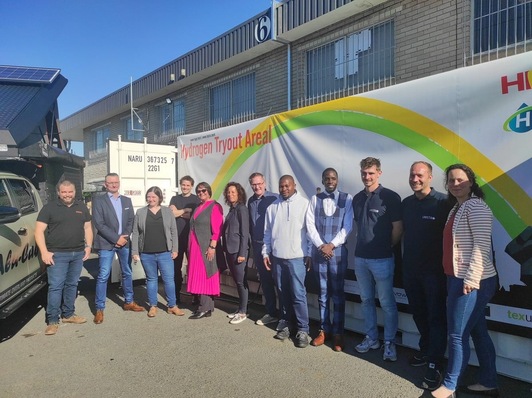At the “Offshore Europe” trade fair in Aberdeen, AquaVentus and the Scottish industry association Hydrogen Scotland signed a Memorandum of Understanding (MoU). The agreement provides for close cooperation in the expansion of hydrogen production and infrastructure in the North Sea region.
The cooperation focuses on technologies along the entire value chain – from offshore wind energy and electrolysis to the transport, storage and use of hydrogen. Both organizations also intend to intensify their research activities and jointly advocate for harmonized political framework conditions in Europe.
“Scotland is uniquely positioned to become a leading exporter of green hydrogen due to its enormous offshore and onshore wind potential,” said Nigel Holmes, CEO of Hydrogen Scotland. “In close cooperation with AquaVentus, we are building a bridge across the North Sea – not just between two countries, but for a truly European hydrogen market.”
Jörg Singer, Chairman of the Board of AquaVentus, also emphasized the importance of the partnership: “As Europe’s largest industrial location, Germany depends on reliable volumes of green hydrogen. Cooperation with our partners in Scotland opens up enormous opportunities: we are combining offshore wind, electrolysis and a shared pipeline infrastructure.”
Position paper on German-British infrastructure
In parallel with the signing of the MoU, AquaVentus has published a position paper. It describes the prerequisites for cross-border hydrogen trade between Germany and the United Kingdom. The basis includes, among other things, the Kensington Agreement and the “Common Understanding” of the European Commission from May 2025.
The paper highlights three key prerequisites: First, cross-border interconnection of producers and consumers is necessary. Second, regulatory framework conditions must be harmonized. Third, hybrid connection concepts are needed that integrate electricity and hydrogen networks.
“The hybrid connection concepts agreed in the coalition agreement and the inclusion of cross-border hydrogen pipelines should be anchored in the Wind Energy at Sea Act (WindSeeG) as quickly as possible,” said Robert Seehawer, CEO of AquaVentus. This is the only way to enable cost-effective offshore electrolysis during periods of low energy prices.
Background: AquaVentus and Hydrogen Scotland
In the long term, the partners aim to establish a pan-European hydrogen network. Projects such as AquaDuctus could serve as a nucleus for a European Hydrogen Backbone. The intensified cooperation with the United Kingdom is described in the paper as a contribution to European energy resilience.
AquaVentus aims to produce one million tonnes of green hydrogen annually from offshore wind energy in the North Sea by 2035 and transport it to shore via pipeline. The initiative brings together more than 100 companies, organizations and research institutions.
Hydrogen Scotland has over 200 members from industry, municipalities, academia and development agencies. The association supports projects in the fields of mobility, stationary energy supply, industrial decarbonization and energy storage.
The full position paper is available on the AquaVentus website.









